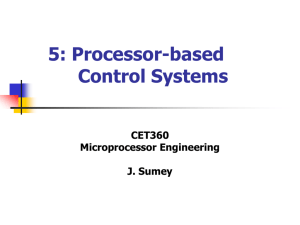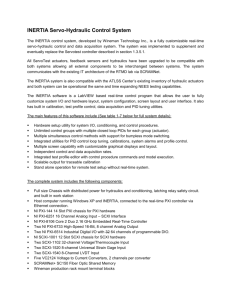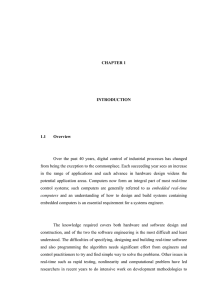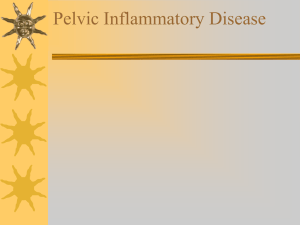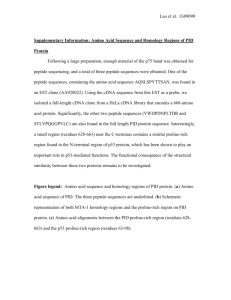Part 1
advertisement
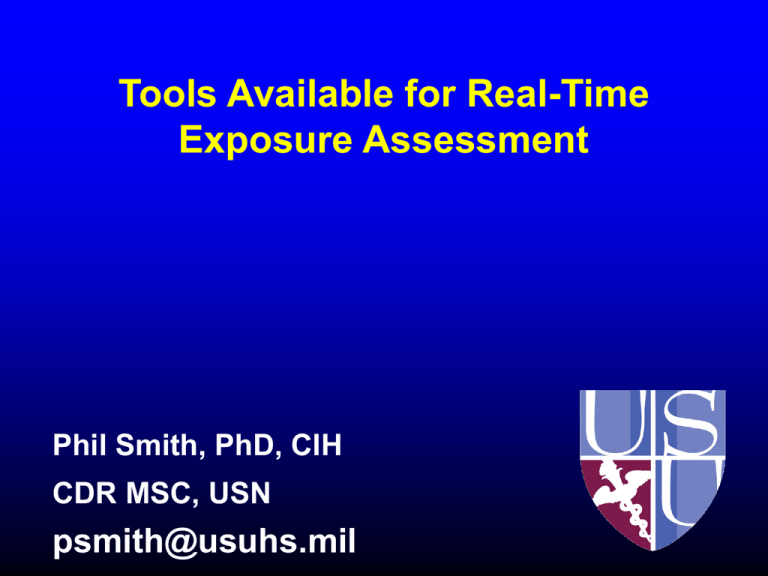
Tools Available for Real-Time Exposure Assessment Phil Smith, PhD, CIH CDR MSC, USN psmith@usuhs.mil Objectives Describe the range of field chemical detection systems now available Describe trends in real-time detection and identification tools towards the ideals of “faster,” “cheaper,” and “easier-to-use” Types of Real-Time Exposure Assessment Tools Transportable Man-portable (Derived from Level 4) Handheld Quantitative Detectors Small Colorimetric Single-use Detectors Military Capabilities without Instrumentation S Cl M8 Paper (simple) O H3C P CH3 O CH3 M256 Kit (complicated) Length-of-Stain Indicator Tubes Color change produced through chemical rection Length of stain corresponds to concentration when a given volume of air is sampled Simple Handheld Instruments Capable of Quantitative Detection Photoionization detector as an example… A simple and rugged instrument that uses relatively little power Relies on atmospheric pressure photoionization of target analytes Selectivity is based on ionization potential Combined PID/Electrochemical Sensors Electrochemical Sensors Basis for Photoionization • UV light energy removes electron from neutral target molecules, creates ions • The resulting electrical current from these ions is proportional to contaminant concentration • The UV energy emitted must be sufficient to ionize that particular substance, or PID will not detect that analyte PID Operation 100.0 ppm + - + - Current is measured and concentration is displayed on meter + - - + Gas enters the instrument Ions flow to charged Plates, producing current Non-ionized gas exits the instrument intact UV lamp Courtesy of Bob Henderson, GFG Inc. What does a PID Measure? Some Ionization Potentials (IPs) for Common Chemicals 9.8 eV Lamp 10.6 eV Lamp 15 11.7 eV Lamp Not Ionizable by PID 14.01 14 Ionization Potential 13 (eV) 12 12.1 11 10.5 9.99 10.1 10 11.3211.47 10.66 9.24 9.54 9 8.4 8 Carbon Monoxide Oxygen Carbon Tet. Methylene chloride Acetic Acid Ethylene IPA Vinyl Chloride MEK Benzene Styrene Courtesy of Bob Henderson, GFG Inc. Sarin Detection and Cleardown, PID How does Ion Mobility Spectrometry work? How does Ion Mobility Spectrometry work? IMS analysis of VX O O P S CH3 Reactant Ion (H2O) Peaks SPME Fiber (with VX) Introduced Reduced Mobility (cm2V-1s-1) N Person-Portable IR H H H H H H | | | | | | H–C–C–C–C–C–C–H | | | | | | H H H H H H n-hexane When a molecular bond vibrates at the same frequency as IR light the bond and the light are resonant The bond is “excited” as the IR light is absorbed by the molecule Field-Portable GC-MS Existing Level-1 and Level-2 Real-Time Information Capabilities Detection systems found in Level-1 (single use colorimetric) and Level-2 (handheld) have an important role now in exposure assessment (1) New technologies (e.g., field-portable GC-MS) will provide even better qualitative data for increased clarity with immediate feedback (2) Current systems provide actionable real-time data to both hygienist (exposure assessment) AND workers (safety); as systems are further refined for precision and reliability this will grow in importance



